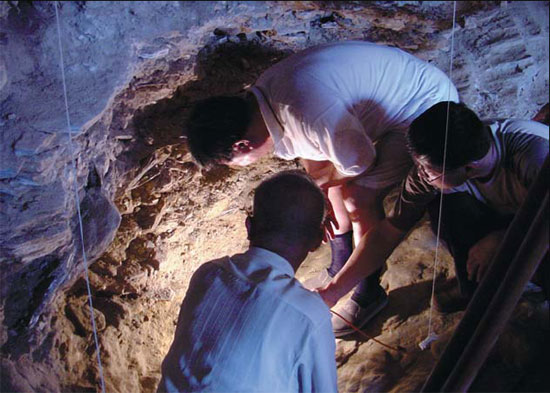Bones that piece together our past
Updated: 2013-01-31 13:37
By Cheng Yingqi (China Daily)
|
|||||||||||
 |
|
Scientists from the Chinese Academy of Sciences excavated Tianyuan Cave man in 2003. Photos provided to China Daily |
The origins of humans have intrigued anthropologists for the longest time. Now an international group of paleoanthropologists has found that humans who lived some 40,000 years ago near Beijing were likely related to many present-day Asians and Native Americans. They reveal the details to Cheng Yingqi.
|
 |
|
 |
|
 |
Twelve years ago on a summer afternoon, local farmer Tian Xiumei climbed up a mountain in Fangshan district, 50 km southwest of downtown Beijing, in search of water to irrigate her trees. Halfway up the mountain, she found a small cave, which looked like the mouth of a spring. Tian took a flashlight and dove into the small entrance that only allowed one person to pass through. She was disappointed that there were no traces of a spring inside.
What she found instead were fragments of animal bones, which eventually led to the discovery of a partial human skeleton. Those were actually the bones of modern Chinese ancestors.
Tian's discovery later led to a deeper excavation by scientists from the Institute of Vertebrate Paleontology and Paleoanthropology under the Chinese Academy of Sciences in 2003.
On Jan 21 of this year, the scientists released their latest research findings on the bones excavated from Tianyuan Cave. The ancient DNA has revealed that humans who lived some 40,000 years ago in the area near Beijing were likely related to many present-day Asians and Native Americans.
The scientists sequenced nuclear and mitochondrial DNA that had been extracted from the leg of the Tianyuan Cave person, who lived in the region about 40,000 years ago.
Previous DNA evidence on modern man in East Asia could only be traced back to less than 10,000 years ago.
"This individual lived during an important evolutionary transition when early modern humans, who shared certain features with earlier forms such as Neanderthals, were replacing Neanderthals and Denisovans, who later became extinct," says Svante Paabo from the Max Planck Institute for Evolutionary Anthropology in Leipzig, Germany.
Paabo is the leader of the study, jointly conducted by the Max Planck Institute and IVPP.
Related Stories
Life improving in Laojing village, yet past draws tourists 2012-10-26 14:20
Past and present 2012-09-17 14:36
Toys from the past 2012-08-06 15:11
A return to the past produces fresh surprises 2012-07-22 09:58
Today's Top News
Police continue manhunt for 2nd bombing suspect
H7N9 flu transmission studied
8% growth predicted for Q2
Nuke reactor gets foreign contract
First couple on Time's list of most influential
'Green' awareness levels drop in Beijing
Palace Museum spruces up
Trading channels 'need to broaden'
Hot Topics
Lunar probe , China growth forecasts, Emission rules get tougher, China seen through 'colored lens', International board,
Editor's Picks

|

|

|

|

|

|





